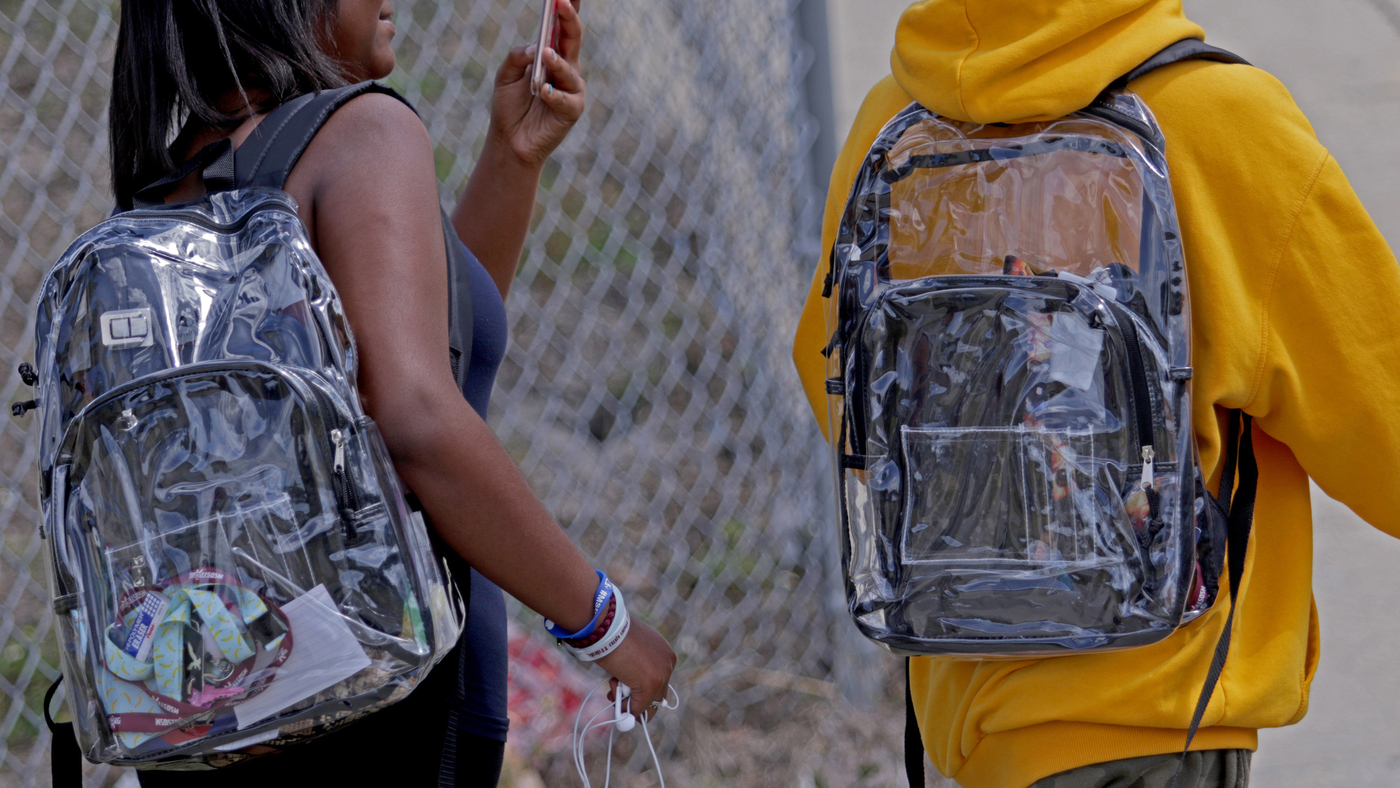
"That day at Marjory Stoneman Douglas High School, when a 19-year-old former student killed Alyssa Alhadeff and 16 other people, changed many lives. And it pushed the question of school safety once again to the front and center. The school discipline policies in Broward County, Fla., designed to be more equitable and more effective than what they replaced, have become exhibit A in what's already a national debate."
"To understand the debate that's raging now, between the "hards" and the "softs," you have to go back first to March 31, 1994. That's when President Bill Clinton signed the Gun-Free Schools Act. The law mandated that if a student brought a firearm to school, law enforcement would be notified. Lesser offenses like bringing "dangerous drugs" or other weapons to school triggered automatic and severe punishments. The next two decades were the era of the hards: "zero tolerance" policies."
Students wear clear backpacks outside Marjory Stoneman Douglas High School as one of several security measures enacted after the Feb. 14 shooting that killed 17. Lori Alhadeff became a school safety activist after her daughter Alyssa was murdered in the shooting. School discipline policies in Broward County were redesigned to be more equitable and effective, but have become central examples in a national debate over safety versus equity. The Gun-Free Schools Act of 1994 triggered an era of "zero tolerance" policies, increasing police presence, physical security measures, and arrests. Those policies produced disproportionate arrest rates for black and brown students.
Read at www.npr.org
Unable to calculate read time
Collection
[
|
...
]